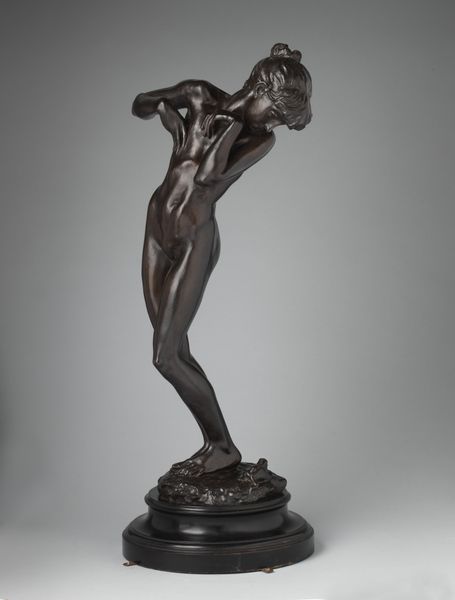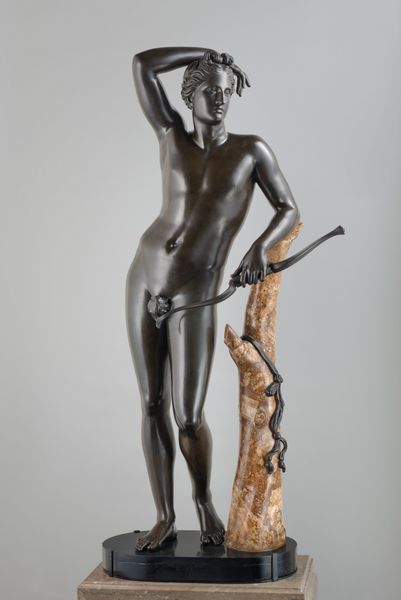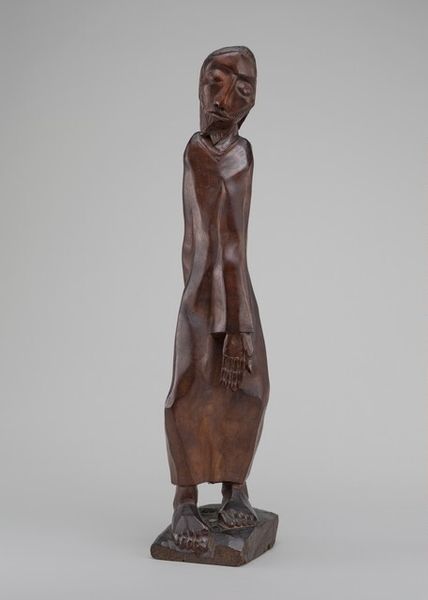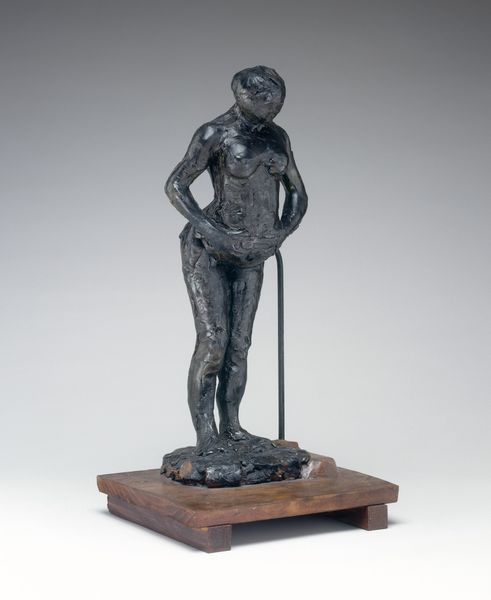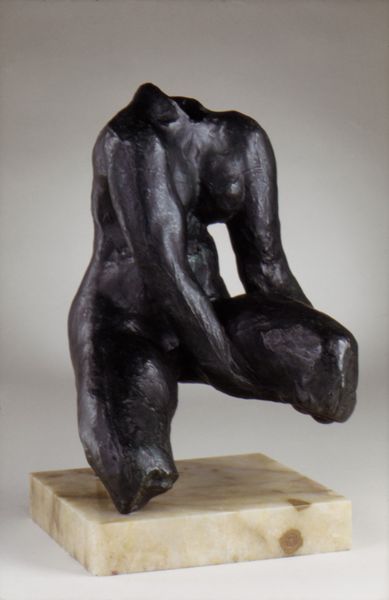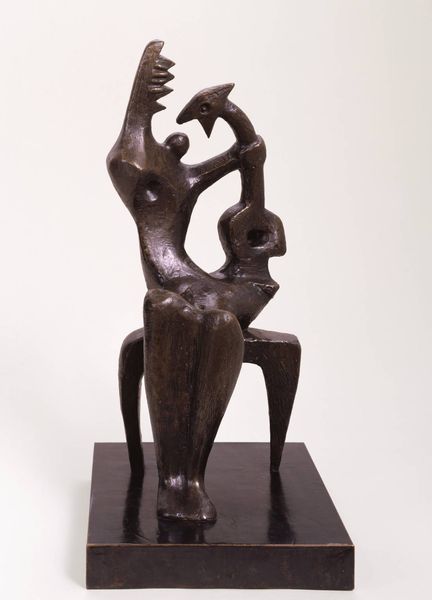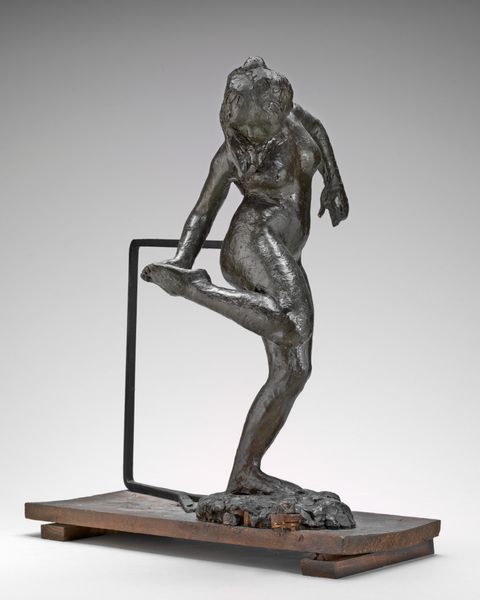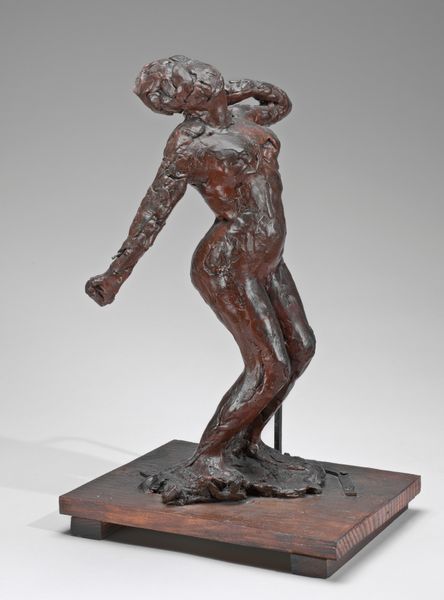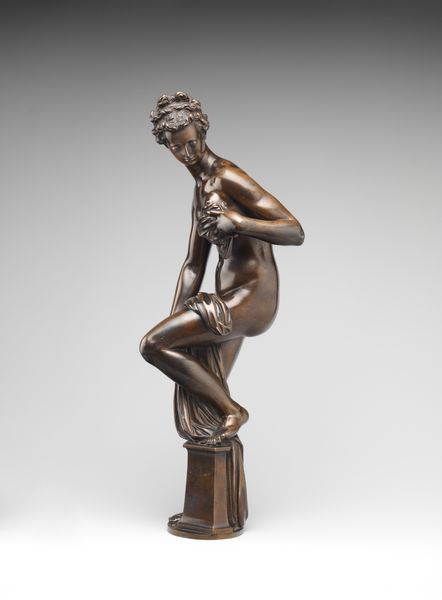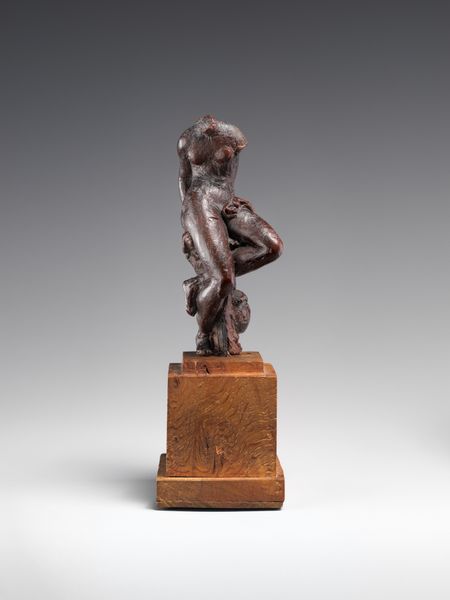
carving, sculpture, wood
#
carving
#
figuration
#
sculpture
#
expressionism
#
wood
#
nude
Dimensions: 117.0 x 32.0 cm
Copyright: Public Domain
Milly Steger carved "Resurrected Young Man" from wood. Steger was working in Germany in the early 20th century, a period of rapid social and political change. As a female artist, she navigated a male-dominated art world, and her work often challenged traditional gender roles. Consider the religious implications of a resurrected man, what does this represent? This work, "Resurrected Young Man," embodies a sense of hope and renewal. Steger’s choice of wood adds a tactile, organic dimension to the sculpture. There's a roughness to the carving that emphasizes a raw, emotional quality. The figure's pose, with arms raised, conveys a feeling of liberation. The work invites us to consider themes of resilience, transformation, and the enduring power of the human spirit. Steger was deeply committed to progressive causes and creating art that spoke to broader social issues, reflecting a time of upheaval and reinvention. It offers a poignant commentary on the capacity for rebirth.
Comments
stadelmuseum about 2 years ago
⋮
Is he afraid of the courage of his own convictions? With one leg already freed from the fetters, the young man stretches his slender body upwards - and at the same time denies the movement with the timid way in which he has placed his arms protectively around his head. With the expressive body language of her 'Resurrecting Youth', who recalls representations of Christ bearing the Cross and of the Last Judgement, Milly Steger captures the ambivalence of the mood between fear and hope that prevailed shortly after the First World War. Steger, who took over the studio of Georg Kolbe in Berlin in 1917, saw her artistic motivation in the "penetration of the spheres of the soul".
Join the conversation
Join millions of artists and users on Artera today and experience the ultimate creative platform.
